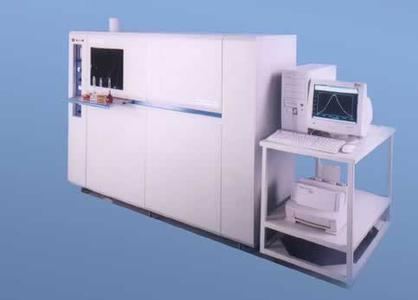Machining Plastic has a small density, light weight, can be insulated. machining Plastic is the use of CNC machining out, including drilling. Cutting, turning, machining Plastic commonly used products are: PA PC, Tetlon POM, PMMA. , we have a special inspection room to test the products, to ensure that and each size in line with the requirements of the drawings, but also a special machine for the production of material to withstand voltage insulation test. Applied in a variety of industries, including: drone, ship, communications, medical equipment, industrial automation equipment. Machining Plastic,Oem Precision Machining Plastic,Cnc Machining Plastic,CNC Plastic Machining Hong Kong RYH CO., LTD , https://www.szcncmachiningparts.com With the rapid development of chemometrics and computer technology, near-infrared spectroscopy analysis of infrared spectroscopy has shifted to the stage of analyzing weak signals and multi-component multivariate information processing. This analysis method mainly focuses on molybdenum chemical analysis methods. The instruments involved include atomic absorption, atomic fluorescence, and inductively coupled plasma atomic emission spectrometry, which basically replace the relevant standards of the 1980s.
With the rapid development of chemometrics and computer technology, near-infrared spectroscopy analysis of infrared spectroscopy has shifted to the stage of analyzing weak signals and multi-component multivariate information processing. This analysis method mainly focuses on molybdenum chemical analysis methods. The instruments involved include atomic absorption, atomic fluorescence, and inductively coupled plasma atomic emission spectrometry, which basically replace the relevant standards of the 1980s.
Spectral analysis technology has been continuously improving, and the field of application is also continuously expanding. Recently, NEC has developed a brand-new spectral analysis technology, which for the first time has broken through the limitations of the weather, and can be applied to large scales even in bad light conditions. The scope of observations on a scale can be seen to play a significant role in the conservation of biodiversity on a global scale.
The application of spectral analysis technology to tea in near infrared spectroscopy In recent years, helium has been successfully used in the analysis and determination of products in many industries such as food, tobacco, pharmaceuticals and chemical industry, especially in the qualitative analysis of agricultural and sideline products, because of its rapidity, no need to The advantages of stove chemistry, non-destructive and multi-component simultaneous quantitative analysis have been more widely used. As early as the 1970s, Japan had applied near-infrared spectroscopy technology to the quantitative analysis of various components of tea, such as the quantitative analysis of tea polyphenols, caffeine, total nitrogen, crude fiber, etc., and achieved good results. Domestic application of near-infrared spectroscopy for the determination of components in tea has also been reported, but it is confined to the traditional stage of multivariate regression equations that use certain wavelengths to determine certain components.
Currently, with the rapid development of chemometrics and computer technology, near-infrared spectroscopy analysis of infrared spectroscopy has shifted to the stage of analyzing weak signals and multi-component multivariate information processing. In particular, with the application of the Fourier transform in the 1980s to a near-infrared spectrometer, the light flux was increased, the signal-to-noise ratio was improved, and the resulting spectral line was smoothed, so that the near-infrared technology was effectively applied to a large number of samples for high-precision and rapid analysis. In this paper, the near-infrared spectroscopy of live (leaf), tea and tea products of tea tree was scanned and analyzed by using Bruker's FT-NIR spectrometer (IFS28/N) and OPUSQUANT-2 quantitative and IDENT qualitative analysis software.
With the development of new spectral analysis technology, NEC announced that it has developed a new spectrum analysis technology that has broken through the limitations of the weather for the first time in the world. Even in bad light conditions, it can be applied to large-scale observations, such as The forest hinterland, which is difficult for humans to enter, observes the growth of plants.
Spectral analysis technology is to understand the material and status of objects that cannot be recognized by the naked eye by analyzing the reflected waves of objects. It can be applied to the observation of a wide range of ground and ocean surfaces, such as human ship search and rescue, large-scale agricultural observation, and protection of living organisms during tsunami. Diversity of global-scale ecological observations and resource surveys. However, the previous spectral analysis was achieved by installing a camera on the aircraft, and the correct observation information was obtained only when the sunny days were good. At the same time, a spectral reference similar to the white plate was placed near the observation object. Things, so it is very limited in practical applications.
NEC's newly developed spectral analysis technology, which converges all sunlight wavelengths (300 nm to 4000 nm) from sunny to cloudy days, has for the first time in the world been able to break through the effects of weather on observations. It can be correct from the spectrum in sunny and cloudy conditions. Stable inference of the surface reflection information of the object's material, state, etc. Compared with the prior art, the estimation error can be reduced by 70%, greatly improving the accuracy of the observation.
Spectrometers Need to Improve Analytical Method Levels